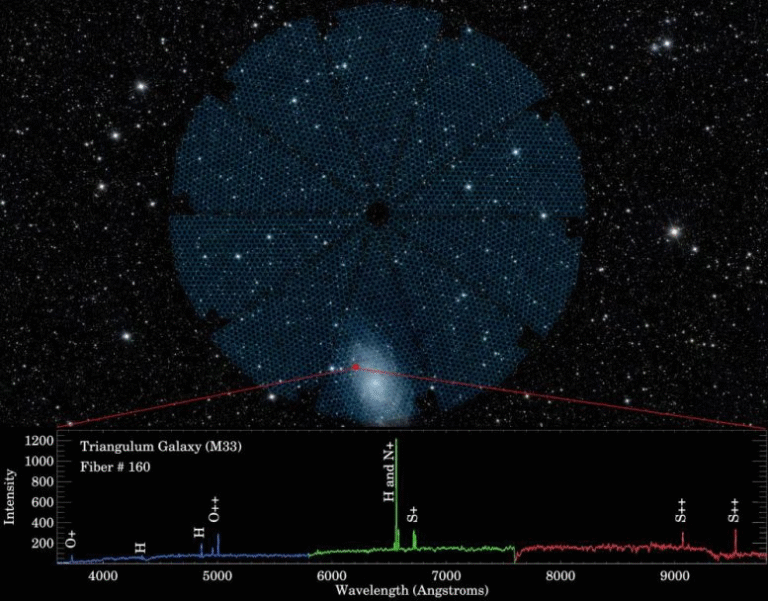The Nearest Alien Civilization Might Be 33,000 Light-Years Away, Says New Study

A new scientific study presented at the EPSC–DPS 2025 Joint Meeting in Helsinki has shed light on one of humanity’s most intriguing questions: How common are other intelligent civilizations in our galaxy? The research, led by Dr. Manuel Scherf and Professor Helmut Lammer from the Space Research Institute at the Austrian Academy of Sciences in Graz, suggests that technological civilizations—if they exist—are likely extremely rare. In fact, the nearest alien civilization could be as far as 33,000 light-years from Earth.
That distance places any potential neighbors on the opposite side of the Milky Way, meaning that even if they are out there, contact is practically impossible with our current technology.
What the Study Found
The researchers set out to understand how often planets might host technological extraterrestrial intelligences (ETIs)—civilizations capable of developing and using advanced technology, perhaps even communicating across the stars. Their work combined planetary science, atmospheric chemistry, and astrophysical modeling to estimate how many such civilizations could exist at the same time as humanity.
Their findings were sobering. To have even one other technological civilization existing right now in the Milky Way, that civilization would have to survive for at least 280,000 years. If the goal is to have ten civilizations overlapping with us, each would need to last more than 10 million years.
That’s a daunting prospect, considering that modern human civilization—counting from the invention of agriculture—is only about 10,000 years old.
The Planetary Conditions for Life
Scherf and Lammer didn’t just consider any potentially habitable planet. They focused on worlds that could realistically support complex, oxygen-breathing life and eventually technological species. According to their analysis, such a planet must satisfy some very specific conditions:
- Plate tectonics – This process continually recycles carbon between the atmosphere and the planet’s interior. Without it, a planet’s carbon dioxide (CO₂) could become locked away in rocks, stopping the carbon cycle and eventually halting photosynthesis.
- A balanced atmosphere – The right mix of gases is essential. On Earth, our air is roughly 78% nitrogen, 21% oxygen, and a tiny 0.042% CO₂. That small fraction of CO₂ plays a critical role in maintaining a stable climate and supporting life.
- Oxygen levels of at least 18% – Below that threshold, there wouldn’t be enough free oxygen to allow open-air combustion. Without fire, the development of metal smelting and technological advancement would be nearly impossible.
These are not minor details—they’re strict requirements for a planet to support both life and the eventual rise of a civilization capable of science, engineering, and communication.
The Carbon Dioxide Balance
A key part of the study focused on the role of carbon dioxide in maintaining a planet’s biosphere. Too much CO₂ leads to a runaway greenhouse effect (like Venus), while too little starves plants of the carbon they need for photosynthesis. The trick is maintaining a delicate balance.
Scherf and Lammer modeled different atmospheric compositions to see how long such a balance could sustain a living planet:
- A planet with 10% CO₂ in its atmosphere could keep its biosphere active for about 4.2 billion years.
- A planet with 1% CO₂ could sustain life for around 3.1 billion years.
Eventually, CO₂ gets trapped in rocks through geological processes, slowly depleting the atmosphere. Once levels fall too low, photosynthesis stops, leading to the collapse of the biosphere.
For Earth, this fate awaits us sometime between 200 million and 1 billion years in the future, depending on how plate tectonics and solar radiation evolve.
Lifespans of Civilizations and Why They Matter
The researchers then compared biosphere lifetimes with the time it took for technological life to emerge on Earth—about 4.5 billion years from planet formation to present-day humans. They used this timescale to model how long civilizations elsewhere would need to endure for two of them to exist at the same time.
The results were striking:
- For even one overlapping civilization, the average technological lifespan needs to be at least 280,000 years.
- To have ten civilizations existing simultaneously, the average lifespan must exceed 10 million years.
This shows that even if intelligent life does appear elsewhere, the odds of it existing right now, during humanity’s brief technological moment, are very low.
The Nearest Civilization — A Long Way Off
Based on these calculations, the nearest advanced civilization could be roughly 33,000 light-years away. For context, our Sun sits about 27,000 light-years from the Milky Way’s center, placing any potential alien society well beyond our galactic neighborhood.
That means that if aliens exist, their signals would take 33,000 years to reach us, and ours would take just as long to reach them. Even if they were pointing their telescopes at us this very moment, they’d be seeing Earth as it was during the last Ice Age, long before humans had built cities or written language.
Why These Results Matter for SETI
These results might sound discouraging for projects like SETI (Search for Extraterrestrial Intelligence), which has spent decades listening for radio signals from space. But the researchers say it’s quite the opposite. Every search, even if it yields nothing, helps refine our understanding of how rare—or how common—technological civilizations may be.
If we never detect an extraterrestrial signal, it strengthens the case that intelligent life is exceedingly rare. But if we do detect something, it would instantly become one of the greatest discoveries in human history, proving that we’re not alone in the universe.
In short, searching is the only way to find out.
The Bigger Picture: How Rare Is Life Itself?
Scherf and Lammer also emphasized that their calculations only consider planets that already have life. The real question goes deeper: how likely is life to begin at all?
Right now, scientists can’t confidently assign probabilities to critical steps in life’s evolution, such as:
- The origin of life (abiogenesis) – How do nonliving chemicals organize into self-replicating systems?
- The emergence of photosynthesis – How does life start producing oxygen and building a stable atmosphere?
- The rise of multicellular organisms – How does life evolve beyond single-celled forms?
- The development of intelligence and technology – How often do advanced brains and tools arise?
Each of these steps could be common—or vanishingly rare. Because we only have one known example (Earth), we can’t say for sure. If even one of these steps has a low probability, it would drastically reduce the number of intelligent civilizations in the Milky Way.
Earth as a Template
The researchers acknowledge that their model is Earth-centric. It assumes life elsewhere would depend on conditions similar to ours—oxygen-rich atmospheres, liquid water, plate tectonics, and moderate temperatures. But what if life can thrive under very different circumstances?
For instance, some scientists have proposed that methane-based life could exist on Saturn’s moon Titan, or that subsurface oceans on Europa and Enceladus could harbor microbial ecosystems independent of sunlight. These environments wouldn’t lead to civilizations like ours, but they show that “life” might not always mean “Earth-like life.”
If we expand our definition of habitability, the galaxy could be teeming with simpler life forms, even if technological civilizations remain rare.
The Lifespan of Earth’s Habitability
Another fascinating takeaway from the study is how it relates to Earth’s long-term future. As the Sun ages and becomes brighter, our planet will gradually warm. Over hundreds of millions of years, rising temperatures will accelerate CO₂ removal from the atmosphere, shutting down photosynthesis and making the planet uninhabitable.
This slow process means that Earth’s biosphere is already past its midpoint in terms of total lifetime. Our species emerged in the latter part of the planet’s habitable window, which may explain why technological life could be rare even on otherwise Earth-like planets—there simply isn’t that much time for it to develop.
What This Means for the Future of Humanity
If the average technological civilization must last hundreds of thousands or even millions of years to have a chance of coexistence, then the implication is clear: longevity matters. The longer we survive, the higher the odds that we might one day discover—or be discovered by—someone else.
This study indirectly suggests that our own survival as a species could be part of the answer to the great question of the cosmos. Every year we endure increases the overlap window for contact with another intelligent civilization, somewhere out there in the Milky Way.
In the meantime, continuing to explore, listen, and learn remains our best path forward.
Research Reference:
“How common are biological ETIs in the Galaxy?” by Manuel Scherf and Helmut Lammer, presented at EPSC–DPS 2025.
https://meetingorganizer.copernicus.org/EPSC-DPS2025/EPSC-DPS2025-1512.html





